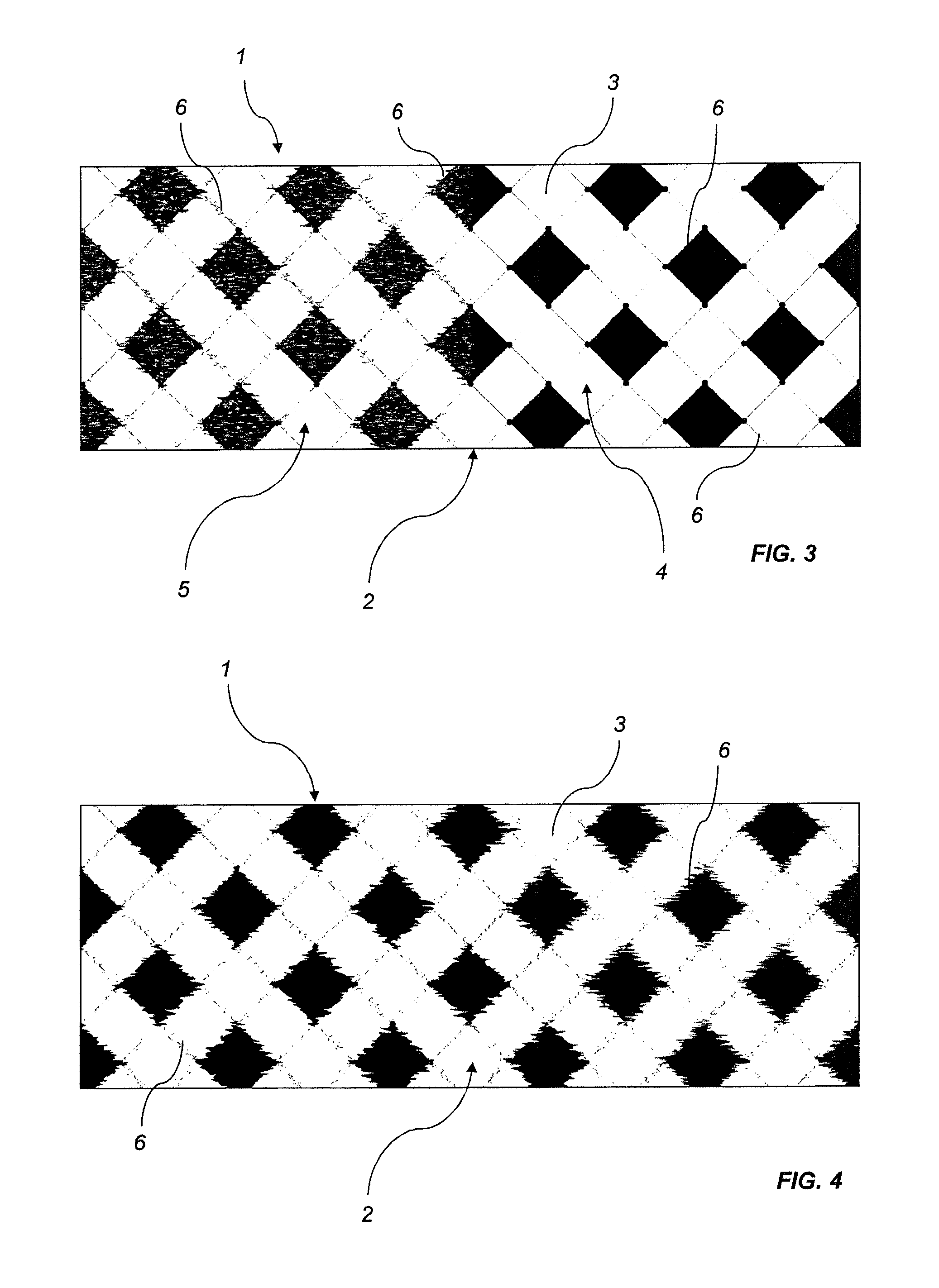Method for forming a decorative design on an element of a wood-based material
a technology of wood-based materials and decorative designs, which is applied in the direction of decorative surface effects, duplicating/marking methods, decorative arts, etc., can solve the problems of uv curable inks being extremely irritating to eyes and skin, uv curable inks generally not environmentally friendly, and high cost of uv curable inks compared to other types of inks, so as to prevent the ink from bleeding into the surface, reduce the bleeding of inks
- Summary
- Abstract
- Description
- Claims
- Application Information
AI Technical Summary
Benefits of technology
Problems solved by technology
Method used
Image
Examples
example 1
[0096]An element of solid hickory is provided. No primer is applied to the surface of the element on which the decorative design is to be printed.
[0097]A decorative design is printed on a surface of said element by means of a digital printing device. The ink applied is an aqueous ink. The digital printing device comprises four print heads.
[0098]The decorative design is a natural wood pattern, which is printed on top of the wood pattern of the solid hickory.
[0099]No heat is applied prior, during or after printing.
[0100]After the ink has dried, at least one protective surface layer is applied to the surface of the element having the decorative design printed thereon. The lacquer used is a water-based polyurethane lacquer (Aqua Zar®, gloss 90 by M&P DIY Products AB).
[0101]An element having a decorative design as shown in FIG. 2 is thereby obtained. The bleeding of the aqueous ink contributes to obtain a natural wood pattern.
example 2
[0102]An element of solid oak is provided. An aqueous solution comprising at least one metallic salt is applied to a surface of the solid oak element. Depending on how much bleeding is desired, the concentration of the metallic salt in the aqueous solution is varied. The aqueous solution comprising the metallic salt forms an ink fixing primer. The aqueous solution is applied by means of a roller on the complete surface of the element.
[0103]A decorative design is printed on a surface of said element by means of a digital printing device. The ink applied is an aqueous ink. The ink is a heat sensitive curing ink. The digital printing device comprises four print heads.
[0104]The decorative design is a fantasy pattern.
[0105]Heat is applied after printing. The temperature is preferably 160-200° C., depending on the speed of the conveyor belt.
[0106]At least one protective surface layer is applied to the surface of the element having the decorative design printed thereon. The lacquer used is...
example 3
[0108]An element of solid hickory is provided. A water-based UV-curable primer is applied to a surface of the element. The UV-curable primer is applied by means of a roller on the complete surface of the element. The UV-curable forms an ink fixing primer, reducing bleeding of the aqueous ink.
[0109]A decorative design is printed on a surface of said element by means of a digital printing device. The decorative design is printed wet-in-wet with the UV-curable primer, i.e. the UV-curable printer has not been cured. The ink applied is an aqueous ink. The ink is a heat sensitive curing ink. The digital printing device comprises four print heads.
[0110]The decorative design is a natural wood pattern resembling ash wood, which is printed on the hickory element.
[0111]The UV-curable primer is cured by a UV lamp.
[0112]When the UV-curable primer has cured, at least one protective surface layer is applied to the surface of the element having the decorative design printed thereon. The lacquer use...
PUM
| Property | Measurement | Unit |
|---|---|---|
| surface tension | aaaaa | aaaaa |
| temperature | aaaaa | aaaaa |
| particle size | aaaaa | aaaaa |
Abstract
Description
Claims
Application Information
 Login to View More
Login to View More - R&D
- Intellectual Property
- Life Sciences
- Materials
- Tech Scout
- Unparalleled Data Quality
- Higher Quality Content
- 60% Fewer Hallucinations
Browse by: Latest US Patents, China's latest patents, Technical Efficacy Thesaurus, Application Domain, Technology Topic, Popular Technical Reports.
© 2025 PatSnap. All rights reserved.Legal|Privacy policy|Modern Slavery Act Transparency Statement|Sitemap|About US| Contact US: help@patsnap.com



